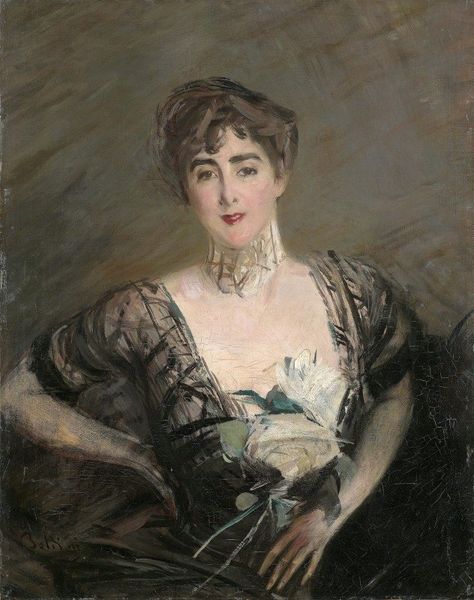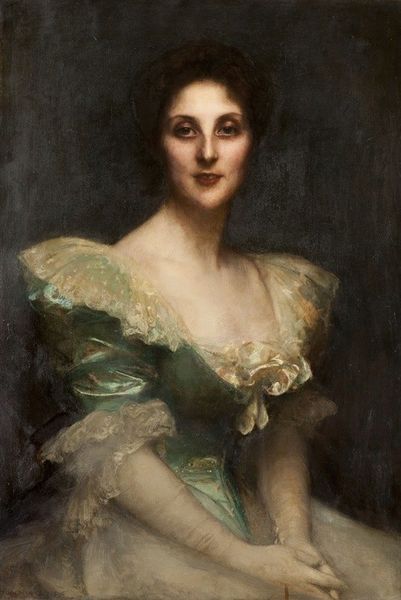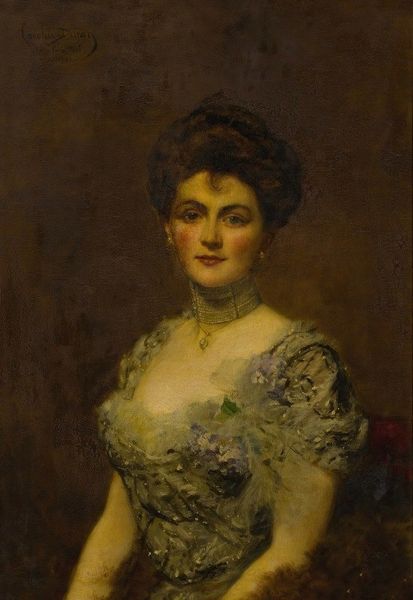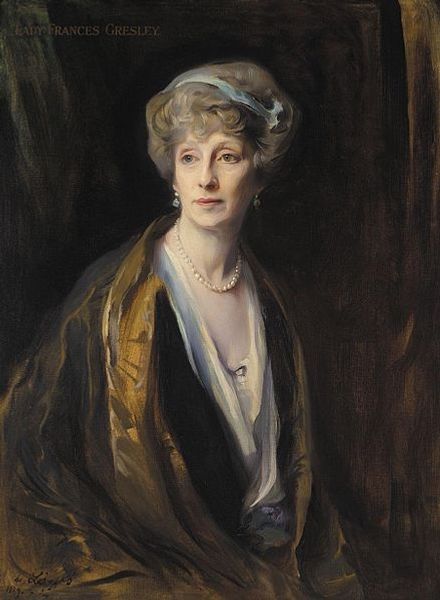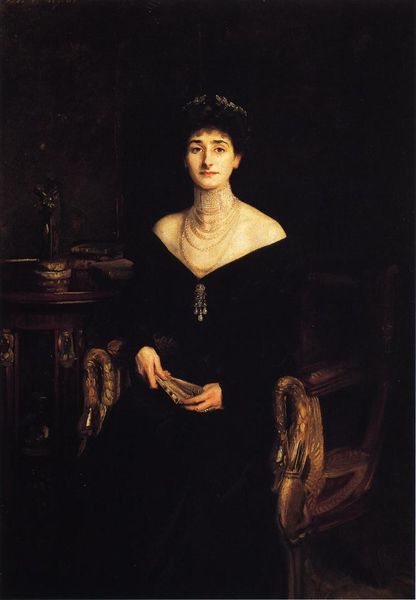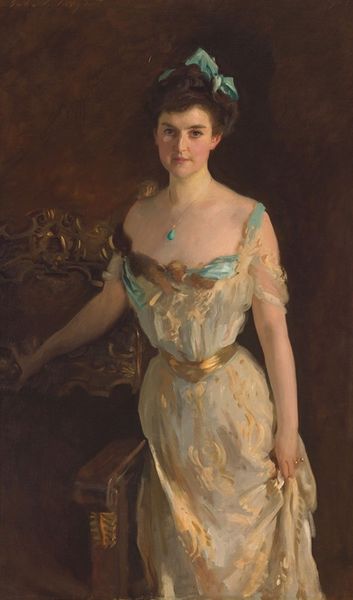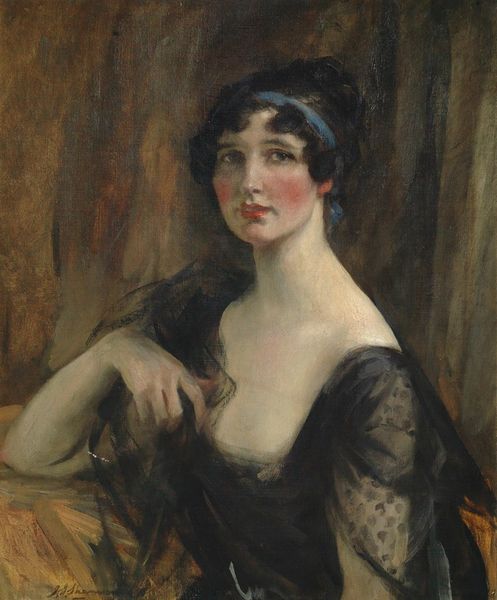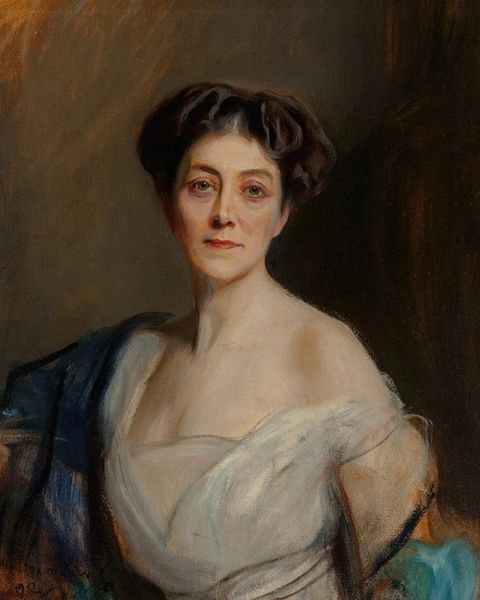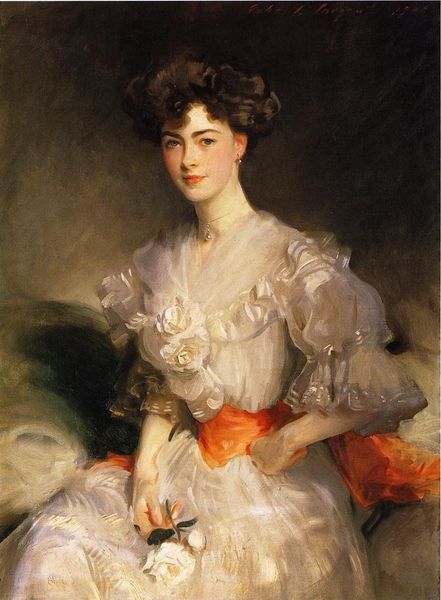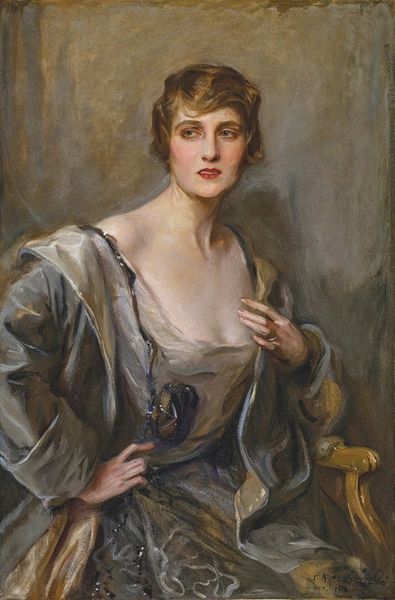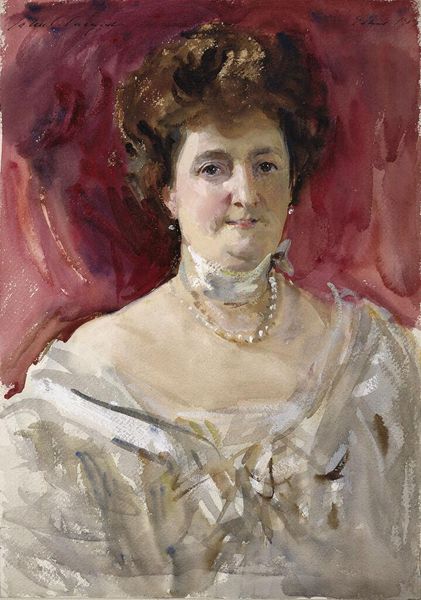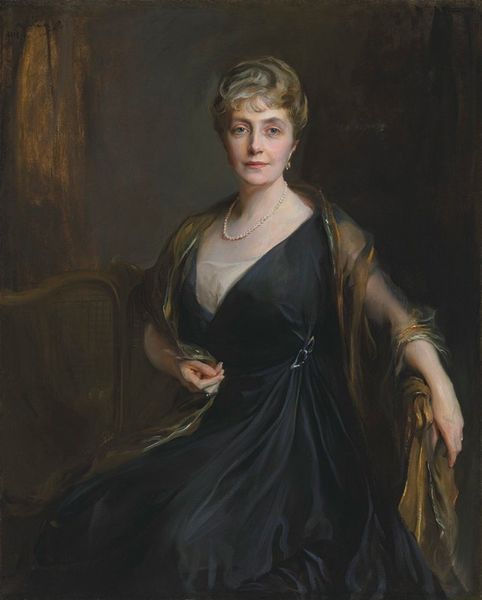
Copyright: Public Domain: Artvee
Curator: Here we have Philip Alexius de László's oil painting, "Viscountess Byng of Vimy, née Marie Evelyn Moreton," completed in 1917. Editor: My first impression is one of quiet dignity. The limited color palette and soft brushstrokes create an almost dreamlike, serene mood. Curator: Indeed. László was a society portraitist, and this work encapsulates the role women like Lady Byng played during the First World War. Note her calm demeanor, reflective perhaps of her contributions during wartime. The gaze almost conveys strength and resoluteness, despite a somewhat demure pose. Editor: The composition is quite traditional, with the subject centered and framed by the dark background. The teal shawl and green jewelry introduce an interesting chromatic harmony and bring out the subtle tones in her skin and hair. I wonder, why such focus on those jade ornaments? Curator: Jewellery always signified social standing. The accessories tell as much a story as the visible representation of the sitter themselves. Marie Evelyn Moreton, as the Viscountess Byng, was entitled to display wealth and sophistication; these were necessary in her role alongside her husband, who was an active and renowned military man. Editor: There's something about the application of paint, particularly in the rendering of the shawl, that draws the eye. It is as if László wants to call attention to these decorative elements. This makes us ponder our own relationship to adornment and visual pleasure. Curator: Certainly. One could argue that it critiques the expectations placed on women of that era, particularly within the British aristocracy. A silent portrayal of female fortitude through times of social unrest and national sorrow. Editor: Looking at it, I'm struck by how the artist balances light and shadow to create depth and volume, guiding the eye. This gives it a tactile sense almost, like she could simply emerge out of the picture frame, with no extra contextual elements to enhance that sensation. Curator: A fair point to conclude on! It has been insightful examining this work and understanding how it connects us to the history and positionality of women through the passage of time. Editor: Absolutely, understanding how the technical execution and chromatic choices speak volumes about aesthetic preference and what those choices say in an enduring image such as this, is key to seeing deeper into history.
Comments
No comments
Be the first to comment and join the conversation on the ultimate creative platform.
